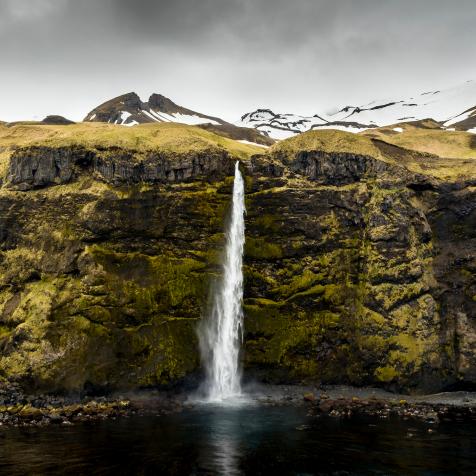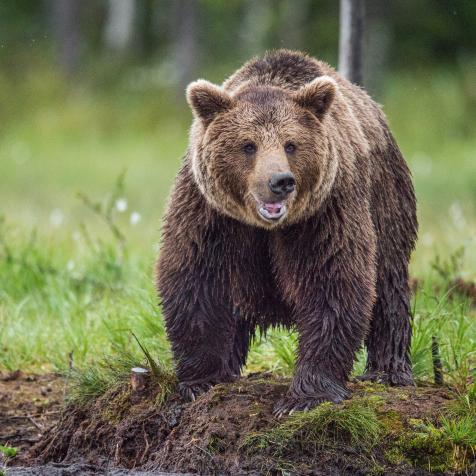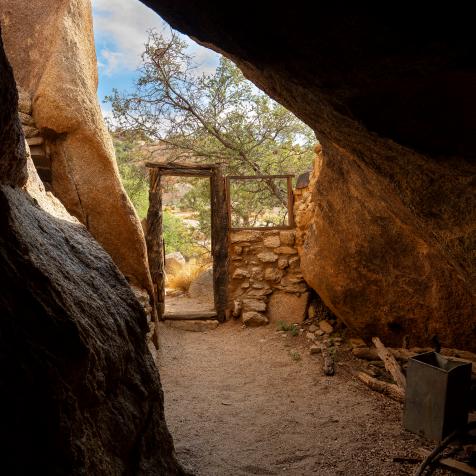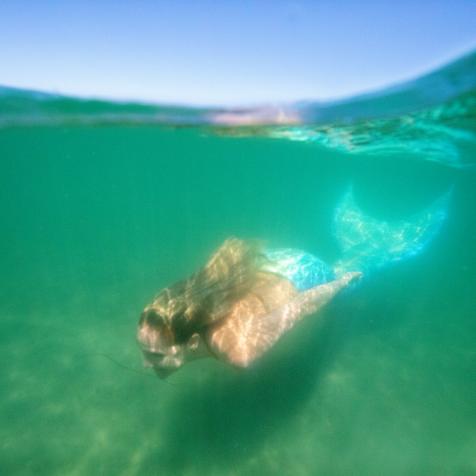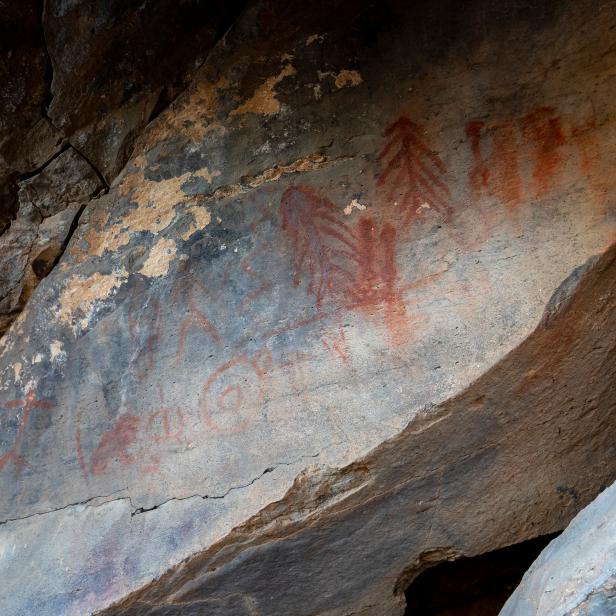
Ian Shive
Ancient Rock Art of the Mojave National Preserve

My first expedition to Mojave National Preserve, California, was an epic adventure that felt ripped right off the pages of an Indiana Jones movie. An ancient cave in an unassuming desert landscape that at high noon, reveals shafts of light into a soft, sandy cave, like an underground sundial.
What’s amazing is the volcanic eruptions and lava flows that formed this cave stretches back millions of years, though there was still some volcanic activity in the region as recently as 800-1,000 years ago. That means some volcanic activity may have been encountered by the first inhabitants of this land.
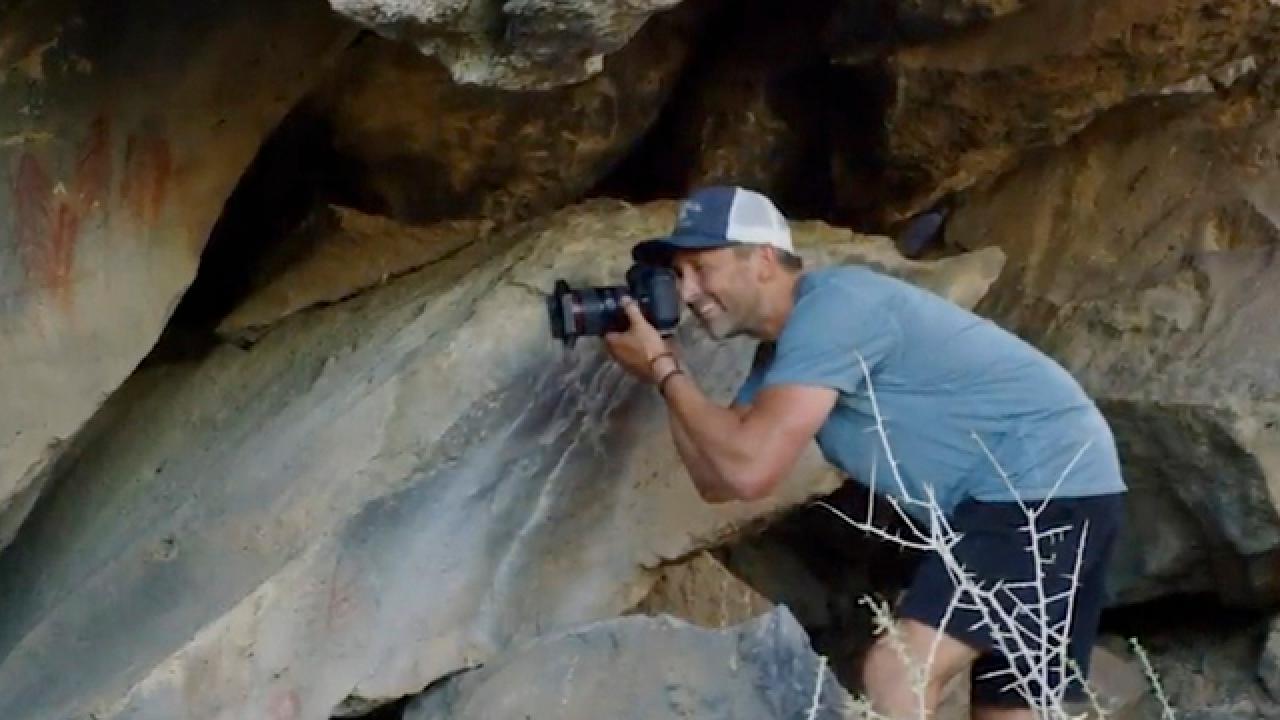
Several tribal groups have lived in the Mojave Desert within the past 2,000 years, with the northern and eastern portions occupied by the Kawaiisu, Kitanemuk, Serrano, Koso, and Southern Paiute bands, including the Chemehuevi. It was this last group, the Chemehuevi, who were the primary inhabitants of the area now encompassed by Mojave Preserve. Oddly enough, the name Mojave is derived from a different tribe, the Mohave (a shortened form of Hamakhaave), their native language meaning “beside the water.”
Documenting the most visible signs of these early inhabitants is always exciting and challenging. Even though the name may mean “beside the water”, water is extremely scarce, which means a lot of planning and a lot of extra weight for any longer hikes to explore these exceptionally remote and difficult-to-reach areas. Adding in the weight of your camera bag, it is even tougher, though thankfully there are plenty of places to park and camp nearby, where you can store additional resources.
The rock art here varies from place to place, though the area I visited while on assignment is part of an area that is designated on the National Register of Historic Places. The proximity of the pictographs (painted on a wall) and petroglyphs (pecked or scratched into the surface) is unusual in this region, which makes it a unique archaeological destination.
For pictographs, red is the prevailing color with those tucked deepest into the cave being the brightest, since they aren’t faded by the sun as much as those further exposed. Many of the exact meanings of the pictographs and petroglyphs are lost to time, but some are thought to be at least 1,500 years old and range from identifiable animals, like snakes, lizards, and centipedes, to much more abstract forms such as circles, patterns, and curves.
The area supposedly has inscriptions by early Euro-American settlers, though I was never able to identify those, but sadly there are still signs from modern-day hikers who vandalize the site (and which is why I’m not specifically naming or locating this place!).
Revealing the Ancient Rock Art of the Mojave 18 Photos
Conservationist and nature photographer Ian Shive takes Mojave National Preserve in California to share with the ancient art that adorns the rocks throughout the desert.
What is most amazing to me about the place is the idea of stepping back in time. This art is late pre-Columbian - or before the arrival of Columbus - and I can barely imagine what this region, and the entire country, must have been like at that time. This rock art is one of our greatest glimpses of this period of time, before so much tragedy. I wonder how much knowledge we have lost about nature itself, from these people who lived under the stars for thousands of years. Perhaps we can all find a way back to nature together, and find peace.
Remember to respect the past and the human history of these regions! Removing anything but photographs is not only shameful, but illegal (and it is patrolled, and hidden trail cameras lurk about). Avoid even touching any of the rock art itself, as the oils from our fingers can cause damage. Look, admire…take photos…and enjoy the beauty of the Mojave National Preserve.








































































